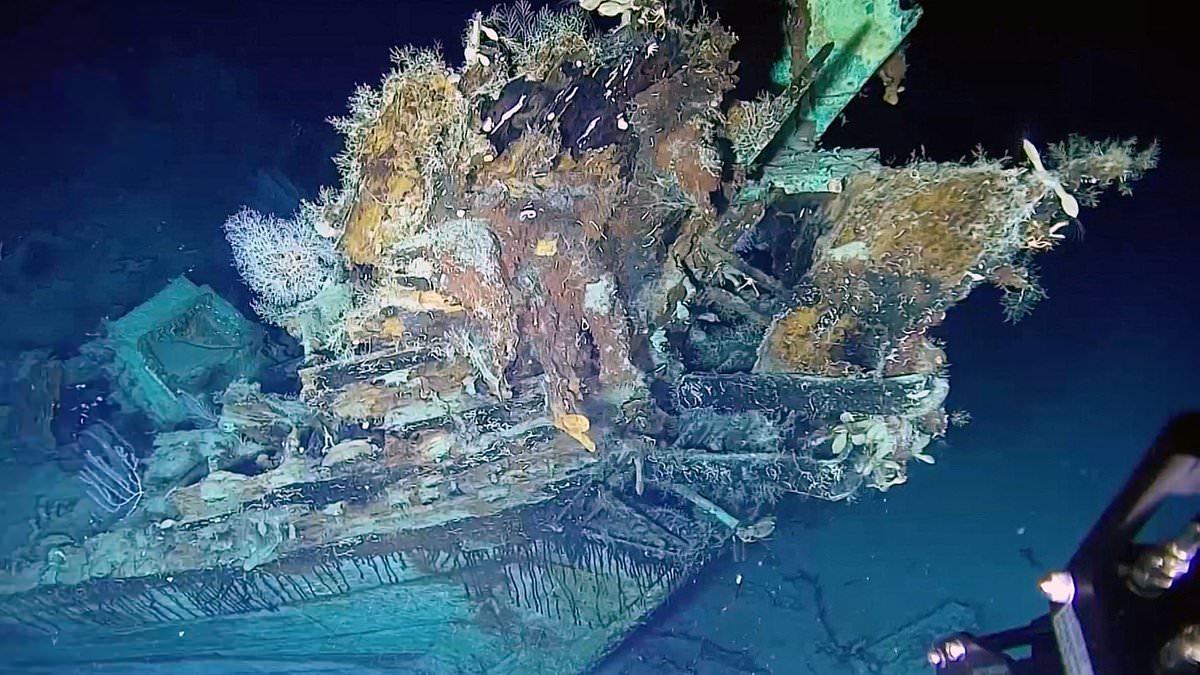Stunning photos have revealed the treasures of a Spanish galleon three centuries after it was blown apart by the British in a Caribbean ambush.
Researchers have released underwater images that are the clearest evidence yet that the wreck is that of the legendary San José, dubbed the ‘holy grail of shipwrecks’, complete with its staggering trove of gold, silver and emeralds.
The San José was sunk in June 1708 off the coast of what is now Colombia during a dramatic ambush by the British.
On board were treasures worth up to $20 billion in today’s money along with 600 sailors. All but 11 of the seamen went down with the ship.
The Colombian navy claimed that it had found the wreck in 2015, but until now evidence of its identity was limited.
A study published on Tuesday in the journal Antiquity has revealed new details about the infamous shipwreck.
Columbian researchers authored the study, which revealed images taken by remotely operated vehicles (ROVs). They show dozens of coins that lie scattered around the wreck, about 1,970 feet under water.
Archaeologist Daniela Vargas Ariza, of Colombia’s Naval Cadet School and the National Institute of Anthropology and History, explained how her team used advanced underwater imaging to examine the site.
This technique included high-resolution scans of silver coins found near the stern.
Those coins, known as ‘cobs’ or ‘macuquinas,’ depict the mark of Lima, Peru, and are dated 1707 – the same year the San José set sail.
Some are stamped with the royal symbols of Castile and León, the emblems of Spain’s empire.
‘Hand-struck, irregularly shaped coins – known as cobs in English and macuquinas in Spanish – served as the primary currency in the Americas for more than two centuries,’ she said in a statement.
‘This body of evidence substantiates the identification of the wreck as the San José Galleon.’
‘The finding of cobs created in 1707 at the Lima Mint points to a vessel navigating the Tierra Firme route in the early eighteenth century. The San José galleon is the only ship that matches these characteristics’.
Also found near the site was Chinese porcelain from the Kangxi period 1662 to 1722, and 17th-century cannons dated to 1665.
In 2015 the Colombian government announced that a team from the navy had discovered the legendary ship lying beneath 3,100 feet of water.
In 2022 another team brought back jaw-dropping images of its perfectly preserved cargo. And in 2023 the Colombian government said it would be raised before President Gustavo Petro’s term of office ends in 2026.
At the time a US firm claimed it found the boat and demanded half the loot. The Spanish government and an indigenous group also claimed to have rights over it.
Glocca Morra, an American research company, claimed it found the San Jose in 1981 and turned the coordinates over to the Colombians on the condition it would receive half the fortune once the vessel was recovered.
But this was countered in 2015 by Colombia’s then president, Juan Manuel Santos, who said the Navy had found the boat at a different location on the sea bed.
The 62-gun galleon was sailing from Portobelo in Panama at the head of a treasure fleet of 14 merchant vessels and three Spanish warships when it encountered the British squadron near Barú.
Spain and Britain were fighting the War of the Spanish Succession at the time and the Royal Navy was approaching dominance on the high seas when it sent the San Jose to the bottom.
